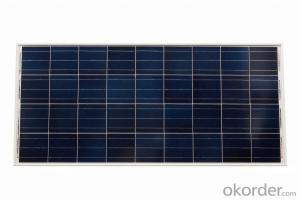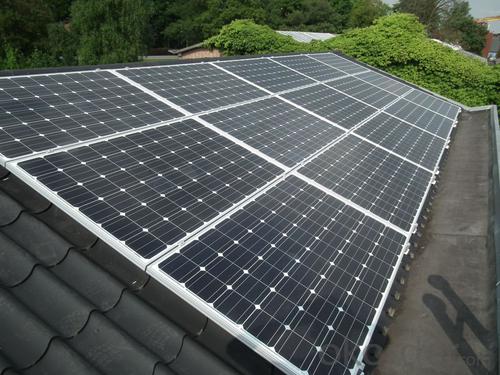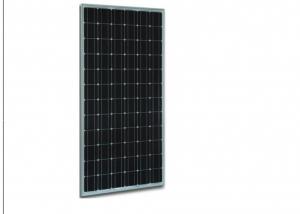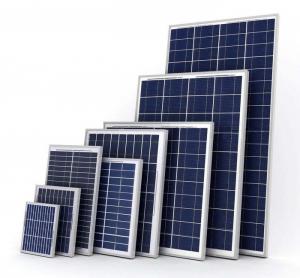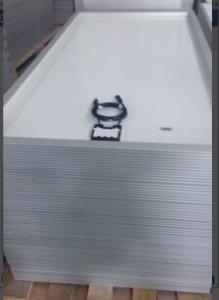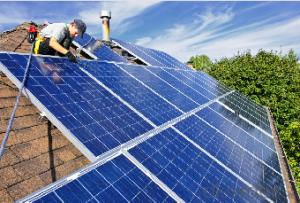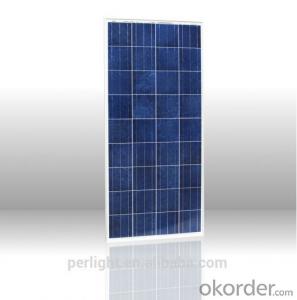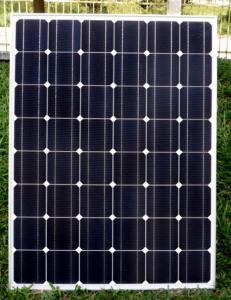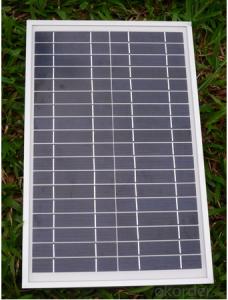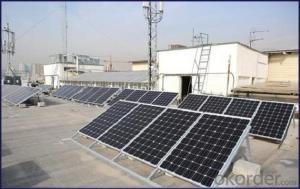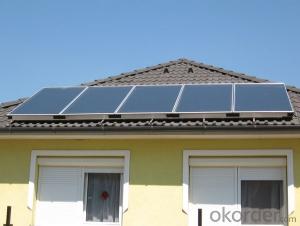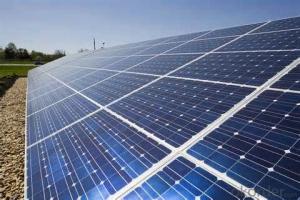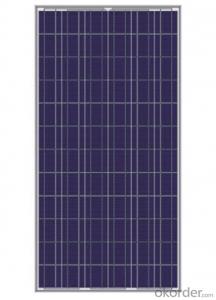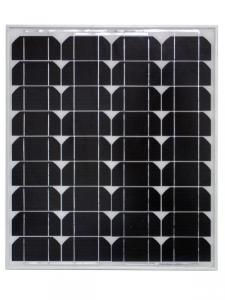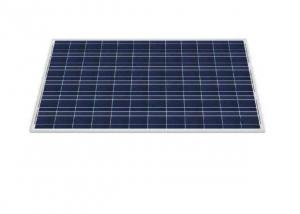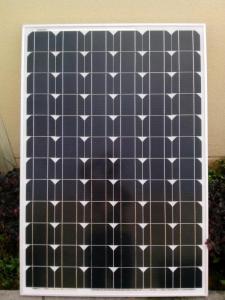10w Poly Solar Module with High Efficiency - Solar Panels Atlanta
- Loading Port:
- Tianjin
- Payment Terms:
- TT OR LC
- Min Order Qty:
- 1 watt
- Supply Capability:
- 100000 watt/month
OKorder Service Pledge
OKorder Financial Service
You Might Also Like
Specification
Product Description:
1.Structure of Solar Module Description
CNBM Solar's photovoltaic module is designed for designed for large electrical power requirement. It is the optimal choice for both on-grid and off-grid power systems. CNBM Solar offers high performance of power per square foot of solar array.
2.Main Features of the Solar Module
Solar Cell: High efficency crystalline solar cell. Even if under the weak light, the solar module can produce maximum power output.
Tempered glass: Anti-reflecting coating and high transmission rate glass increase the power output and mechanical strength of solar module.
EVA and TPT: Using high quality EVA and TPT to prevent destroying and water.
Strong aluminum frames to strengthen the load hold and to stand against high wind.
Junction box: Multi function junction box with water proof.
Long lifetime: ≥25 years; Less power decrease.
Good performance of preventing from atrocious weather such as wind and hails.
Resisting moisture and etching effectively, not effected by geology.
The certificate issued by international authority: UL, TUV, IEC, VDE, CE.
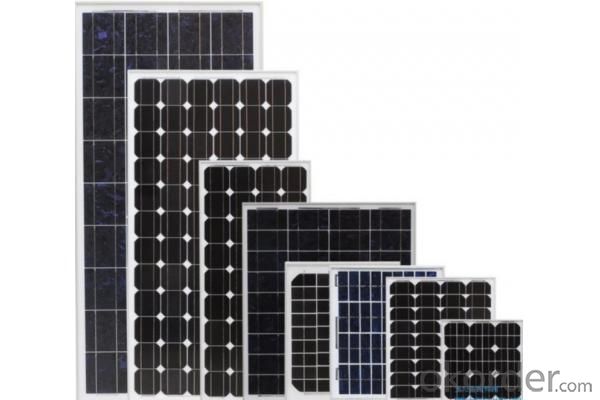
Solar panel working process
In addition to being the ultimate source of all life on earth, the sun is an infinitely renewable, completely pollution-free source of electricity. Instead of burning fossil fuels dug up from the ground in a big power plant – a very 19th century, industrial age approach, when you think about it – solar panels convert sunlight directly into electricity, with no harmful emissions.
The basic unit of a solar panel is a solar cell, which usually consists of one or two layers of silicon-based semiconductor wafers. When struck by the photons in sunlight, the solar cell generates an electrical charge due to the "photovoltaic effect" – which is a pretty good name, since it produces voltage from photons. The flow of these electrons moves in a steady electrical current from one side of the cell to the other.
Dozens of these PV cells are packaged together into solar modules, which in turn are packaged into solar panels that are mounted on a rooftop and arranged to maximize their hours of exposure to direct sunlight. Because the electricity generated by all those solar cells is direct current (DC), it is then sent to an inverter that transforms the power into the same alternating current (AC) used by the appliances in your home and the local utility electricity distribution grid. Increasingly, these inverters are getting "smart," providing data monitoring for solar installation performance and other grid integration services.
- Q: I have two solar panels that were going to be trashed at work. I want to use them to charge batteries on my RV but i noticed they put out around 20 volts in direct sunlight. So i am wondering: -isn't this way too much voltage for a 2 volt system? -do a need some sort of a regulator connected to keep them from overcharging?
- You okorder /
- Q: How do solar panels affect the property's LEED certification?
- Solar panels can have a positive impact on a property's LEED certification by contributing towards earning points in various categories such as Energy and Atmosphere, Sustainable Sites, and Materials and Resources. Installing solar panels demonstrates a commitment to renewable energy and can help achieve higher levels of certification within the LEED rating system.
- Q: i have this usb solar panel charger i am building and the solar panel is about 2by .5quot;, so i was wondering if a led light can power it, if so will one be good or would i need more? if so how many?
- An LED requires an electric current to power it. A solar panel can most definitely power an LED, but LEDs don't store any power themselves. And solar panels aren't designed to be powered, they are designed to generate electricity. Rethink your premise from the start. It is as if you were asking if the electric wires in your home or community would be powered by the light bulbs and appliances you use.
- Q: how much energy does a kilowatt solar panel produce in a year? (average)
- Also you can look for INSOLATION TABLES on the Internet. Keep in mind, though, that the useful output of a solar system that produces AC will be somewhat less than the theoretical value. Local conditions, orientation of the modules, dust on modules, wire resistance losses and efficiency of inverters will drag down the true output. My 6 kW system produces just over 4 kW at optimum sun height.
- Q: What specification of solar panel would I need to power a laptop every day? I would need to use it for about 0 hours or so every day. I don't know anything about solar panels, but I am seriously thinking of getting one now and don't know who to ask.
- You will need, A battery to store the electricity from the solar panel. The amount of electricity from the panel varies up and down as things such as clouds, position of the sun, etc. reduce the amount of solar rays hitting the panel. The battery stores it all, the ups and downs, and sends it back out at a steady voltage so you can operate your p.c. / appliance. A minimum of 45 watts solar panel. 60 watts would be preferable. 45 watts will charge a battery in one day under ideal conditions. You turn the panel as the sun moves across the sky, no clouds. 60 watts will charge a battery in one day with out moving and regardless of clouds. A controler to prevent the electricity from flowing backwards from the battery to the solar panel when the sun goes behind a cloud or sets at night and the charge drops below the voltage of the battery. A good controller will tell you the charge condition of your battery so you know when it is too low to operate your p.c. safely. And finally an inverter with True Sine Wave capability to change the electricity from the battery into usuable power for your PC and other electronics. Not all inverters produce true sine wave electricity. The electricity has static in it and will make your pc screen jump around and not function as it should. New digital T.V.'s also require true sine wave electricity to operate. Go the extra cost and get the inverter with true sine wave and be happy with the way your p.c. functions. Figure out how many Watts your p.c. or appliance will draw. and match the Inverter to the need. Do not go too big, as they cost more and consume more of your stored electricity to operate. Save as much electricity as you can. You will be able to operate your p.c. appliance longer. When not using your p.c., you can operate your T.V. or other low watt appliance.
- Q: Are solar panels recyclable?
- Yes, solar panels are recyclable. The majority of their components, such as glass, aluminum, and silicon, can be recycled and reused in the manufacturing of new solar panels.
- Q: Is this a good kit for building a solar panel?
- Only okorder /
- Q: What is the cost of installing solar panels?
- The cost of installing solar panels can vary depending on various factors such as the size of the system, the location, and any additional equipment or services needed. However, on average, the cost can range from $10,000 to $30,000 for a residential installation. It is important to get a personalized quote from a solar installation company to determine the exact cost for your specific needs.
- Q: I can't figure out how to charge a Ni Cd (BD 8V Firestorm) battery directly with a solar panel so I've come up with an alternative which might or might not work. I thought I would connect an inverter (I found a nice 400W for $30) to my trucks battery and plug the BD Firestorm battery charger into the inverter. Then I was thinking I could use a 5W solar panel to trickle charge the truck battery and keep it connected after the Ni Cd is charged to ensure the truck battery is topped off. The truck would not be running during this process. Will this solution work? Is there a better solution?
- Two of those solar panels connected in series will easily charge a 8V battery. I would not even be concerned about over voltage the solar cells will have plenty of internal resistance.
- Q: how to build a solar panel
- Build okorder
Send your message to us
10w Poly Solar Module with High Efficiency - Solar Panels Atlanta
- Loading Port:
- Tianjin
- Payment Terms:
- TT OR LC
- Min Order Qty:
- 1 watt
- Supply Capability:
- 100000 watt/month
OKorder Service Pledge
OKorder Financial Service
Similar products
Hot products
Hot Searches
Related keywords

